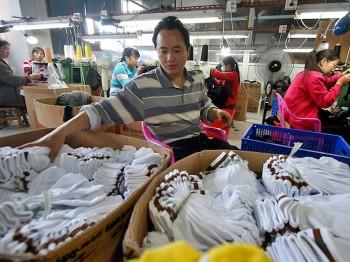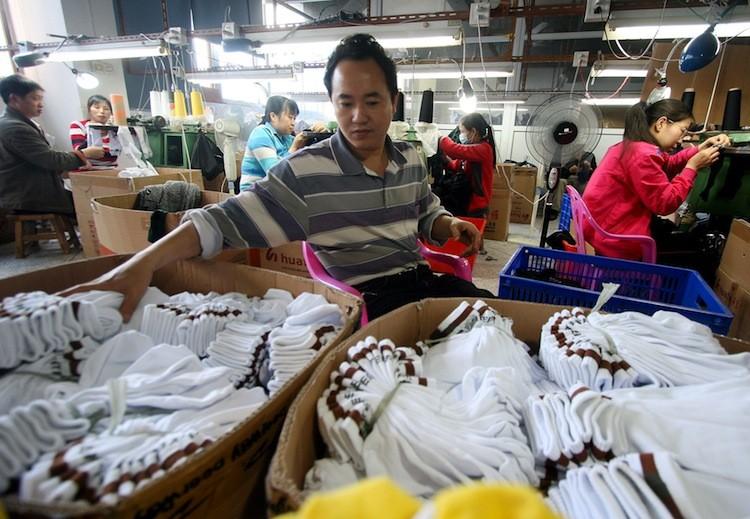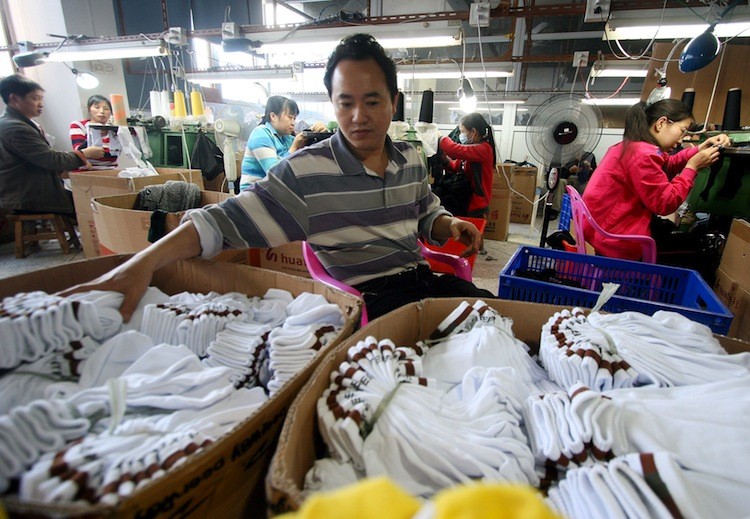China’s Clothing Industry Faces Rocky Road
Export quality Chinese apparel is being sold at giveaway prices within the country as the clothing industry, hit hard by the slump in the global economy, struggles to thrive in the international market.

Laborers working at a sock factory in Jinjiang, in southeast China's Fujian province, on May 9. China's clothing industry was hit hard by the slump in the global economy. STR/AFP/Getty
|Updated:





